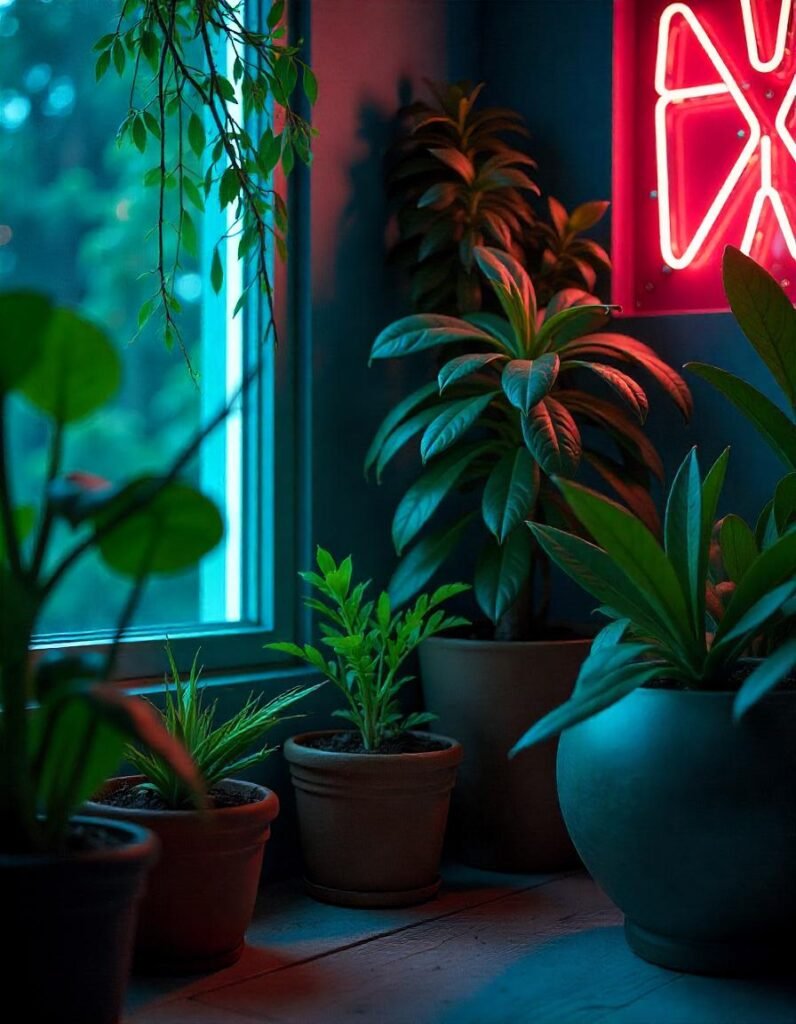How to Care for Indoor Plants for Healthy Growth
As if your residence needed any more sprucing up, these indoor plants not only beautify, they clean the air and create a calm atmosphere to boot. However, they need not only love but also some care to remain healthy. Here are 15 detailed tips to ensure your indoor plants flourish and thrive.

Pick the Perfect Plants for Your Space

Choosing the best plants for your home is key to their growth and survival. Evaluate the indoor conditions such as availability of light, temperature, temperature, and humidity level. Succulents like bright sunlight, and ferns like damp, shaded places, for example. Knowing what plants require from you is half the battle in creating an ecosystem that complements their natural growth if they were outside so that it’s easier for them to thrive inside.
Understand Your Plant’s Light Needs
Light, in fact, is a critical element of photosynthesis, the process that sustains plant life. Assess the light conditions of your home throughout the day. For bright, indirect light, try placing your plants close to sheer curtain-covered windows. Some plants, such as snake plants, can survive in low-light settings. In case you have little natural light, consider investing in grow lights to make up for the deficiency in light, so your plants have the energy they need to stay healthy.

Water Correctly, Minimizing Overwatering
From overwatering — the most common indoor plant killer, resulting in root rot. Insert your finger an inch into the soil and use the finger-test method. Only water when the topsoil is dry to the touch. Use pots with drainage holes and never allow the plant to sit in standing water. So knowing the watering requirements of particular plants will allow you to water them properly while not overdoing it.
Ensure Proper Humidity Levels
Plants indoors tend to do poorly in dry air — especially in winter. Raise humidity with a humidifier, plant grouping, or tray of water and pebbles under the pots. Others, such as tropical plants, love high-humidity situations. Regular misting can also work, but don’t overdo it; too much moisture is fusty. Customize your humidity boosts for the kinds of plants you have.
Fertilize Often but in Small Quantities
That is, fertilizers supply nutrients that are usually absent from potting soil. During the growing season, apply a balanced liquid fertilizer at the recommended rate once a month but cut back or stop feeding altogether during the winter for most plants when they are dormant. Excess fertilization can damage your plants by creating salt accumulations in the soil. Always follow product instructions and consider organic fertilizers for a more natural nutrient boost.
Report When Necessary
As plants grow, roots require more space to spread. Look for telltale signs, like roots pushing out of drainage holes or growth that’s come to a standstill, to know when to move a plant into a new—and larger—container. Pick a one-size larger pot and fresh potting mix to allow for continued growth. Repotting not only gives the plant more space but is also a great way to replace nutrients in the soil for happier roots.
Prune to Encourage Growth
Pruning is important for getting rid of dead or yellowing leaves, to shape the plant, and to encourage new growth. Cut off unwanted sections without damaging the parts you want to keep using clean, sharp scissors or pruning shears. Regular pruning helps keep the air circulating around the plant and discourages pests from getting comfortable on dead foliage. When it’s time to prune, concentrate on working out lost parts or looking sections, as properly as keeping the plant’s organic shape.
Clean the Leaves Regularly
Dust can set glom on leaves that stunt sunlight, impeding photosynthesis. Every few weeks, gently wipe the leaves down with a damp cloth. You can wash little plants in lukewarm water. Regular cleaning, in addition to maintaining vibrant-looking plants, facilitates proper breathing and nutrient absorption which contributes to the overall health of the plants.
Rotate Your Plants for Balanced Growth
Indoor plants typically grow towards the light source, which causes uneven growth. Once a week, rotate your plants so they get equal sun exposure on all sides. This raj of life encourages the straightforward growth of the plant and hinders it from slumping over in one direction. Regularly rotating it also gives you a chance to check the plant for pests or signs of disease.
Keep an Eye Out for Pests and Diseases
Some of the most common indoor plant pests are spider mites, aphids, and mealybugs. Check your plants regularly for signs of infestation, such as sticky residue, discolored leaves, or visible bugs. Treat early with natural remedies such as neem oil or insecticidal soap. Quarantine prescribed plants so that pests don’t spread to healthy plants. Routine monitoring can prevent your plants from suffering extreme damage.
Use Quality Potting Soil
The soil that you use has a profound impact on the health of your plants. Choose a high-quality potting soil that’s well-draining and has organic matter. Don’t use garden soil; however, it can be compacted in pots and restrict root growth. Custom-mixed soil appropriate to your plant’s needs — cactus soil for succulents, mixes with peat for tropical plants — creates the right base for strong, healthy root development.
Control Indoor Temperatures
Wide temperature fluctuations can stress plants and stunt their growth. (Indoor plants prefer a stable environment free from drafts, heaters, or air conditioners.) Most houseplants like temperatures between 65°F and 75°F. Avoid drastic changes, which can lead to wilting or dropping leaves. Because home climate can vary widely, keep an eye on the thermometer and make adjustments as necessary to provide a fairly stable temperature range.
Ensure proper air circulation
Stagnant air can cause fungal diseases and pests to appear. Open windows once in a while or use a small, low-power fan, to maintain circulation of air. Do not put plants in fully sealed containers for long periods of time. Good air circulation not only aids in disease prevention, it also promotes healthy plant respiration and growth, making it even more important for larger indoor collections.
Plant In Groups Based On What They Need
Plants that have the same care needs do better under the same roof (or tent). Tropical plants, for example, thrive on the ambient humidity of being in proximity to other plants, while drought-tolerant succulents and cacti prefer drier conditions. Grouping makes it easier to address their needs without over- or under-caring for certain plants — it can streamline your plant-tending plan of attack.
Cultivate Patience and Consistency
Caring for houseplants is a long-term commitment. Plants can be slow to grow, so try not to overreact to whether progress is too slow. Set up a watering, feeding, and pruning schedule. Daily inspections of your plants will help you learn their individual behaviors and adjust care to suit them. With patience and steady work, you can bring beauty and life into your indoor office and home.




















